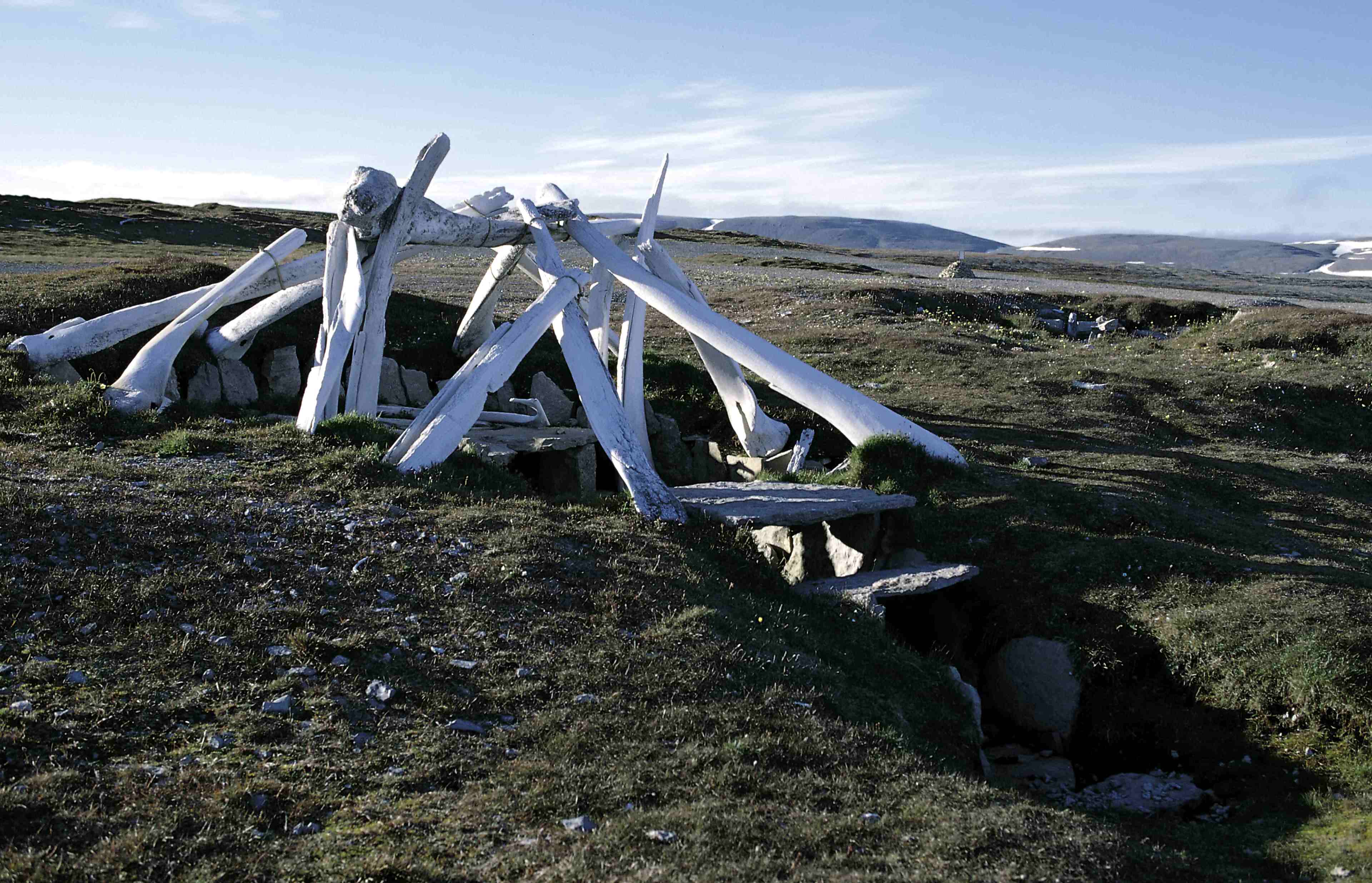Qarmaq on:
[Wikipedia]
[Google]
[Amazon]
 Qarmaq (plural: "qarmat") is an
Qarmaq (plural: "qarmat") is an
 Qarmaq (plural: "qarmat") is an
Qarmaq (plural: "qarmat") is an Inuktitut
Inuktitut (; , syllabics ; from , "person" + , "like", "in the manner of"), also Eastern Canadian Inuktitut, is one of the principal Inuit languages of Canada. It is spoken in all areas north of the tree line, including parts of the provinces o ...
term for a type of inter-seasonal, single-room family dwelling
In law, a dwelling (also known as a residence or an abode) is a self-contained unit of accommodation used by one or more households as a home - such as a house, apartment, mobile home, houseboat, vehicle, or other "substantial" structure. The ...
used by Inuit
Inuit (; iu, ᐃᓄᐃᑦ 'the people', singular: Inuk, , dual: Inuuk, ) are a group of culturally similar indigenous peoples inhabiting the Arctic and subarctic regions of Greenland, Labrador, Quebec, Nunavut, the Northwest Territories ...
. To the Central Inuit of Northern Canada
Northern Canada, colloquially the North or the Territories, is the vast northernmost region of Canada variously defined by geography and politics. Politically, the term refers to the three Provinces_and_territories_of_Canada#Territories, territor ...
, it refers to a hybrid of a tent
A tent () is a shelter consisting of sheets of fabric or other material draped over, attached to a frame of poles or a supporting rope. While smaller tents may be free-standing or attached to the ground, large tents are usually anchored using gu ...
and igloo
An igloo (Inuit languages: , Inuktitut syllabics (plural: )), also known as a snow house or snow hut, is a type of shelter built of suitable snow.
Although igloos are often associated with all Inuit, they were traditionally used only b ...
, or tent and sod house
The sod house or soddy was an often used alternative to the log cabin during frontier settlement of the Great Plains of Canada and the United States in the 1800s and early 1900s. Primarily used at first for animal shelters, corrals, and fences, ...
. Depending on the season, the lower portion was constructed of snow blocks or stone, while the upper portion used skins or canvas. To the Kalaallit
Kalaallit make up the largest group of the Greenlandic Inuit and are concentrated in Kitaa. It is also a contemporary term in the Greenlandic language for the indigenous people living in Greenland (Greenlandic ''Kalaallit Nunaat'').Hessel, 8 The ...
of Greenland
Greenland ( kl, Kalaallit Nunaat, ; da, Grønland, ) is an island country in North America that is part of the Kingdom of Denmark. It is located between the Arctic and Atlantic oceans, east of the Canadian Arctic Archipelago. Greenland is t ...
, qarmaq refers to the dwelling's wall. Qarmaq were built in the transitional seasons of fall and spring with a circular wall of stone, sod, or blocks of snow, a framework usually made from animal bones, which were covered with a skin.
History
Qarmaqs were used by the Inuit up to the 1950s. They were used as early as theThule people
The Thule (, , ) or proto-Inuit were the ancestors of all modern Inuit. They developed in coastal Alaska by the year 1000 and expanded eastward across northern Canada, reaching Greenland by the 13th century. In the process, they replaced people ...
, predominantly during the cold season. In winter, they also lived in igloo, especially while traveling, but when possible, the qarmaq was the preference.
Architecture
Finding the appropriate site for the qarmaq included understanding the geological layout of an area in relationship to elements of weather. Its construction involved men, women and children. ;Snow qarmaq Men collected and pieced together boulders and framework. Lacking timber, the framework was usually made of bone, preferably whale bone. Women and children gathered tundra moss for crevices, and prepared skins for roofing and siding. After winter snow arrived, the men used long knives to cut up blocks of snow, placing them in an outwardly direction for further protection. When the outer casing was attacked by the weather or gnawed on by wolves or foxes, women patched it up again and again, often with numb fingers in the freezing cold and biting wind. ;Sod qarmaq Summer tents, which were easy to transport, gave way to the sod qarmaq in fall.Interior
Inside, qarmaqs offered warmth only by the flame of thequlliq
The qulliq (seal-oil, blubber or soapstone lamp, iu, ᖁᓪᓕᖅ, ''kudlik'' ; ik, naniq), is the traditional oil lamp used by Arctic peoples, including the Inuit, the Chukchi people, Chukchi and the Yupik peoples.
This characteristic ty ...
. The sleeping area was slightly elevated and used caribou skin for padding.
References
{{Native american styles House types Inuit culture Portable buildings and shelters Buildings and structures made of snow or ice Sod houses Traditional Native American dwellings